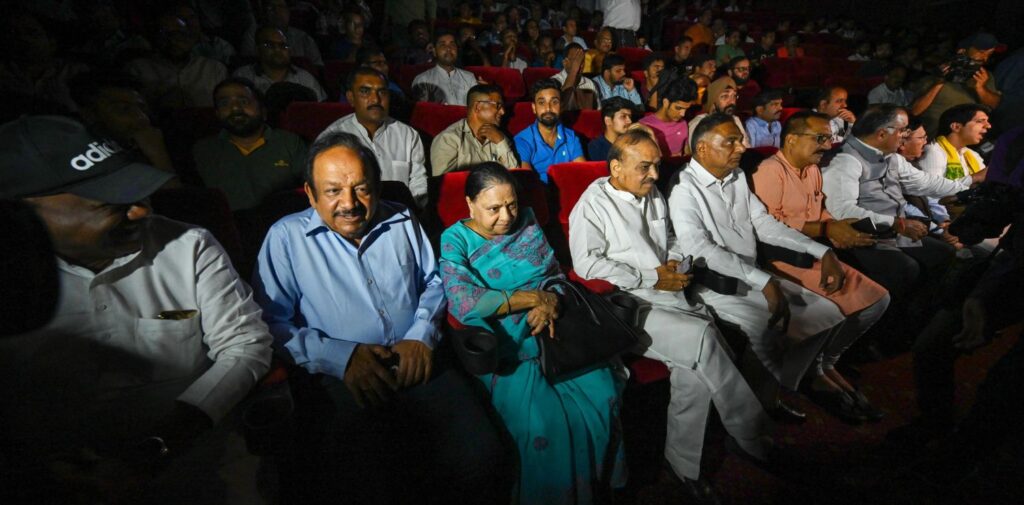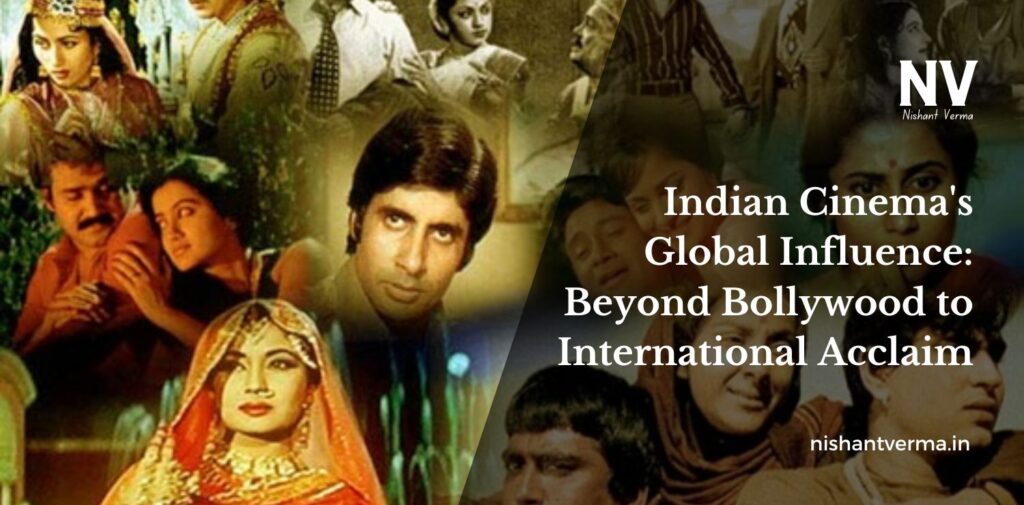Indian cinema has long been a significant cultural force, not only within India but across the globe. While Bollywood often grabs most of the attention due to its massive influence, Indian cinema as a whole has been making waves internationally. The global recognition of Indian films, the rise of regional cinema, and the growing interest in the rich diversity of storytelling have placed Indian cinema on the world map. This article will explore how Indian cinema, beyond just Bollywood, has garnered international acclaim and continues to influence global culture.
The Rise of Bollywood on the Global Stage
Bollywood, the Hindi-language film industry based in Mumbai, has long been considered the face of Indian cinema. Over the years, Bollywood films have gained immense popularity not only in India but also in various parts of the world, particularly in countries with large Indian diaspora communities. Bollywood’s vibrant music, dance, and colorful storytelling have made it a significant part of global entertainment.
In recent years, Bollywood’s global influence has expanded, thanks to the internet and streaming platforms. With movies like Dilwale Dulhania Le Jayenge, Kabhi Khushi Kabhie Gham, and Dangal reaching global audiences, Bollywood has become more than just a regional film industry. The widespread availability of Hindi films on platforms like Netflix, Amazon Prime, and YouTube has made it easier for people from all over the world to experience the magic of Bollywood. Furthermore, stars like Shah Rukh Khan, Amitabh Bachchan, and Priyanka Chopra have achieved international fame, bringing cinema into the global spotlight.

Regional Cinema: A Hidden Gem Gaining Global Recognition
While Bollywood often steals the limelight, India’s regional film industries have been quietly carving out their own space in global cinema. The Tamil, Telugu, Malayalam, Bengali, Kannada, and Marathi film industries have produced some of the most critically acclaimed and innovative films in recent years.
Films from the South Indian film industry, particularly Tamil and Telugu cinema, have been breaking barriers and receiving recognition at international film festivals. Directors like S. S. Rajamouli, with Baahubali, and Mani Ratnam, with films like Roja and Dil Se, have brought regional cinema to the global stage. These films not only showcase the richness of Indian culture but also demonstrate the diversity of storytelling that goes beyond the typical Bollywood formula.
In recent years, Malayalam cinema has gained significant attention for its unique, realistic storytelling, with films like Kumbalangi Nights and Jallikattu being appreciated at international film festivals. These films reflect the changing dynamics of Indian cinema, where content-driven films with nuanced performances and local storytelling are gaining much-deserved recognition.
Indian Films at International Film Festivals
One of the key ways Indian cinema has earned global acclaim is through its participation in international film festivals. Films like Salaam Bombay! (1988), directed by Mira Nair, and Lagaan (2001), directed by Ashutosh Gowariker, were not only critical successes but also received nominations for prestigious awards like the Academy Awards (Oscars). Lagaan, for example, was nominated for Best Foreign Language Film, marking a significant achievement for Indian cinema.
Apart from the commercial success of Bollywood films, there is growing recognition of India’s diverse filmmakers and independent cinema at international platforms. Directors like Anurag Kashyap, Deepa Mehta, and Zoya Akhtar have showcased their works at renowned festivals like Cannes, Venice, and Toronto. Kashyap’s Gangs of Wasseypur was praised for its gripping narrative and bold approach, while Mehta’s Water (2005) became a critical hit at the Toronto International Film Festival.
The increasing number of Indian films being screened at major international film festivals highlights a shift toward global recognition for Indian filmmakers. These films are not only appreciated for their storytelling but also for their portrayal of Indian society and culture. The international acclaim of Indian films is pushing them into the global mainstream, breaking traditional stereotypes of cinema.

The Role of Indian Cinema in Cultural Exchange
Indian cinema plays an essential role in fostering cultural exchange between India and the rest of the world. The unique blend of storytelling, music, dance, and colorful visuals is an aspect of Indian films that resonates with audiences worldwide. Bollywood songs have become iconic and are now frequently heard on international platforms, influencing global pop culture.
Indian films are increasingly being used as a bridge between cultures. Many non-Indian viewers find themselves drawn to the music and dance sequences, which have become a symbol of Indian entertainment. Hollywood, for instance, has shown increasing interest in Bollywood-inspired elements. Movies like The Lunchbox (2013) have captured the attention of global audiences, with many international filmmakers praising the understated charm of Indian cinema.
Additionally, films like Slumdog Millionaire (2008), which was co-produced by Indian filmmaker Danny Boyle, portrayed an Indian story in a universal context, bringing the Indian narrative to the forefront in a Western-dominated cinematic world. While not a typical Bollywood film, Slumdog Millionaire was celebrated for its Indian backdrop and cultural themes, making it a perfect example of how Indian cinema contributes to global cultural understanding.
The Influence of Indian Stars on Global Entertainment
Indian cinema has produced numerous stars who have achieved recognition far beyond Indian borders. Actors like Shah Rukh Khan, Aamir Khan, and Priyanka Chopra are now household names across the globe. Shah Rukh Khan, often referred to as the “King of Bollywood,” has a massive fan following not only in India but also in countries such as the Middle East, Russia, and parts of Europe and Africa. His global appeal has played a significant role in promoting Indian cinema worldwide.
Priyanka Chopra, who gained international fame with her role in Quantico, an American television series, has become one of the most influential Indian stars in Hollywood. Her career has brought attention to the growing diversity of talent in the global entertainment industry. Chopra’s success has paved the way for other Indian actors, like Irrfan Khan and Dev Patel, to make a mark in international cinema. These stars have acted as cultural ambassadors, promoting Indian cinema in the West while also showcasing their skills on global platforms.

Streaming Platforms: The New Frontier for Indian Cinema
The rise of streaming platforms like Netflix, Amazon Prime Video, and Disney+ Hotstar has opened up new avenues for Indian cinema to reach a global audience. With the increasing popularity of online streaming, films from various Indian languages, not just Bollywood, are now being viewed by millions across the world.
Netflix, in particular, has invested heavily in Indian content, producing original films and series in regional languages like Tamil, Malayalam, and Hindi. Shows like Sacred Games, Delhi Crime, and The White Tiger have been widely appreciated for their gripping storytelling and complex characters, offering a fresh perspective on Indian society to international audiences. These shows and films have garnered attention not only in India but also in markets like the United States, the United Kingdom, and Europe.
This shift in how Indian films are consumed has further propelled the global reach of Indian cinema. With films and series available on demand, audiences can explore a variety of genres and regional styles that were previously unavailable to them. Indian cinema is now more accessible than ever before, creating a bridge for global audiences to experience the rich tapestry of Indian culture.
Conclusion
Indian cinema has come a long way since its early days, and in the 21st century, it continues to captivate global audiences with its diverse storytelling, vibrant performances, and cultural richness. From Bollywood’s massive global reach to the growing international recognition of regional cinema, India’s film industry has carved a space for itself in the international arena. The global influence of Indian cinema goes beyond entertainment; it fosters cultural exchange, challenges stereotypes, and showcases the beauty and diversity of India to the world.
As the world becomes increasingly connected, Indian cinema’s influence will only continue to grow. With the rise of streaming platforms, international collaborations, and the success of Indian films at prestigious festivals, the global acclaim of Indian cinema is here to stay. For both Indian audiences and the world at large, Indian cinema offers an exciting and dynamic cinematic experience that transcends borders and brings people together.




